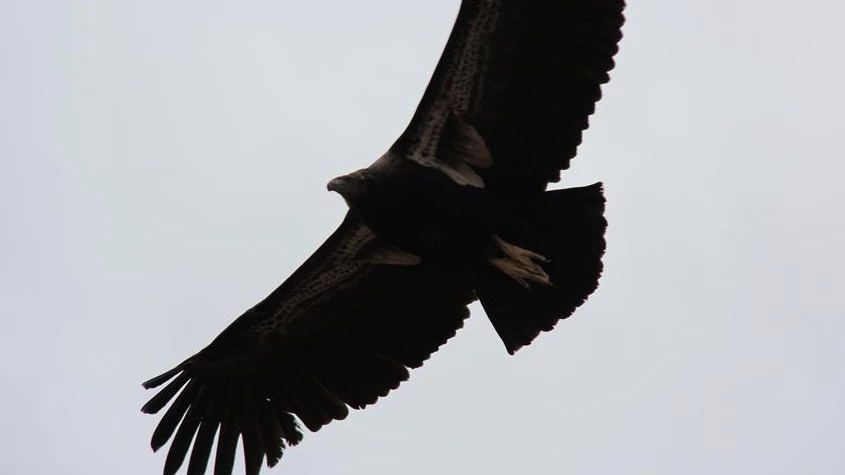
NPS Decline in Population Today, the California condor is one of the rarest animals on earth, with fewer than 450 alive today. During the Pleistocene (2.5 million to 11,700 years ago), condors ranged across North America, along the Pacific coast from Canada to Mexico, across to Florida, and up the Atlantic coast to New York. Bones and eggshells found in the Grand Canyon have shown that condors were a common resident of the region during that time period. Around 10,000 years ago, condor numbers began to decline coinciding with the Pleistocene extinction of many large mammals like mastodons, giant ground sloths, camels, and saber-toothed cats which condors fed on. By the time Europeans arrived in western North America, condor populations had retreated to a stronghold along the Pacific coast from British Columbia to Baja California. Habitat degradation, hunting, cyanide poisoning (aimed at predators like coyotes), power line collisions, egg collecting, and especially lead poisoning began to take a heavy toll after Western settlement began. Lead poisoning remains the greatest threat to California condors today, and is caused when condors eat animals that have been shot by lead ammunition. Condors traditionally lived in Arizona, but by the 1930s no condors lived outside California. In 1982, total world population stood at just 22 individuals, putting the species at the brink of extinction.
Recovery and Reintroduction Due to the rapid decline in population, the California condor was listed as a federally endangered species under the Endangered Species Act in 1967. Critical habitat was identified and mortality factors were studied and one of the largest wildlife recovery efforts ever began. In 1983, the US Fish and Wildlife Service began a captive breeding program, partnering with the Los Angeles Zoo and San Diego Wild Animal Park. (Later, additional breeding facilities at the Peregrine Fund's World Center for Birds of Prey in Boise, ID and the Oregon Zoo in Portland, OR were added.) In the wild, condor populations continued to diminish until in 1985 only nine wild birds remained. A controversial decision was then made to capture the remaining wild California condors to place them in captive breeding programs and on April 19, 1987, the last wild condor was captured in California. All hope was placed in the success of the captive breeding program and for over four years, there were no California condors soaring in the wild. Because California condors don't become sexually mature until six years of age and breeding pairs only lay one egg every other year, rebuilding the population was a formidable task. To increase the number of eggs laid each year, captive breeders would remove eggs as they were laid, prompting the birds to lay a second, and sometimes third, egg. Eggs that were removed were incubated and the chicks were reared by hand-puppets designed to look like adult condors. As a result, the total world population dramatically increased from 22 individuals in 1987 to over 400 today. Captive-bred condors were released into the wild in California beginning in January 1992. In December 1996, the Peregrine Fund released six young captive-bred condors in Vermilion Cliffs, about 30 miles (48 kilometers) north of Grand Canyon National Park. For the first time in nearly 80 years, California condors were free flying in Arizona skies. Subsequent releases have occurred every year since then. In October 2002, a third population was established on the Baja peninsula in Mexico. Three condors were released, marking the first time since 1937 condors were seen in the area. Grand Canyon Condors Captive-bred California condors have adapted well to the Grand Canyon region. As of October 2015, 73 free-flying condors live in the Arizona/Utah population, many of which frequent the Grand Canyon. These birds come from all four captive breeding locations and some have even been born and raised in the wild, including in Grand Canyon National Park. The first wild-bred California condor anywhere since 1982 was seen leaving its Grand Canyon nest cave on November 5, 2003. Unfortunately, this juvenile died in March 2005, but its parents have successfully bred twice in the same nest cave since then. As of June 2014, over 10 wild-bred condors fly free in Arizona and Utah.
|
Last updated: February 11, 2016
